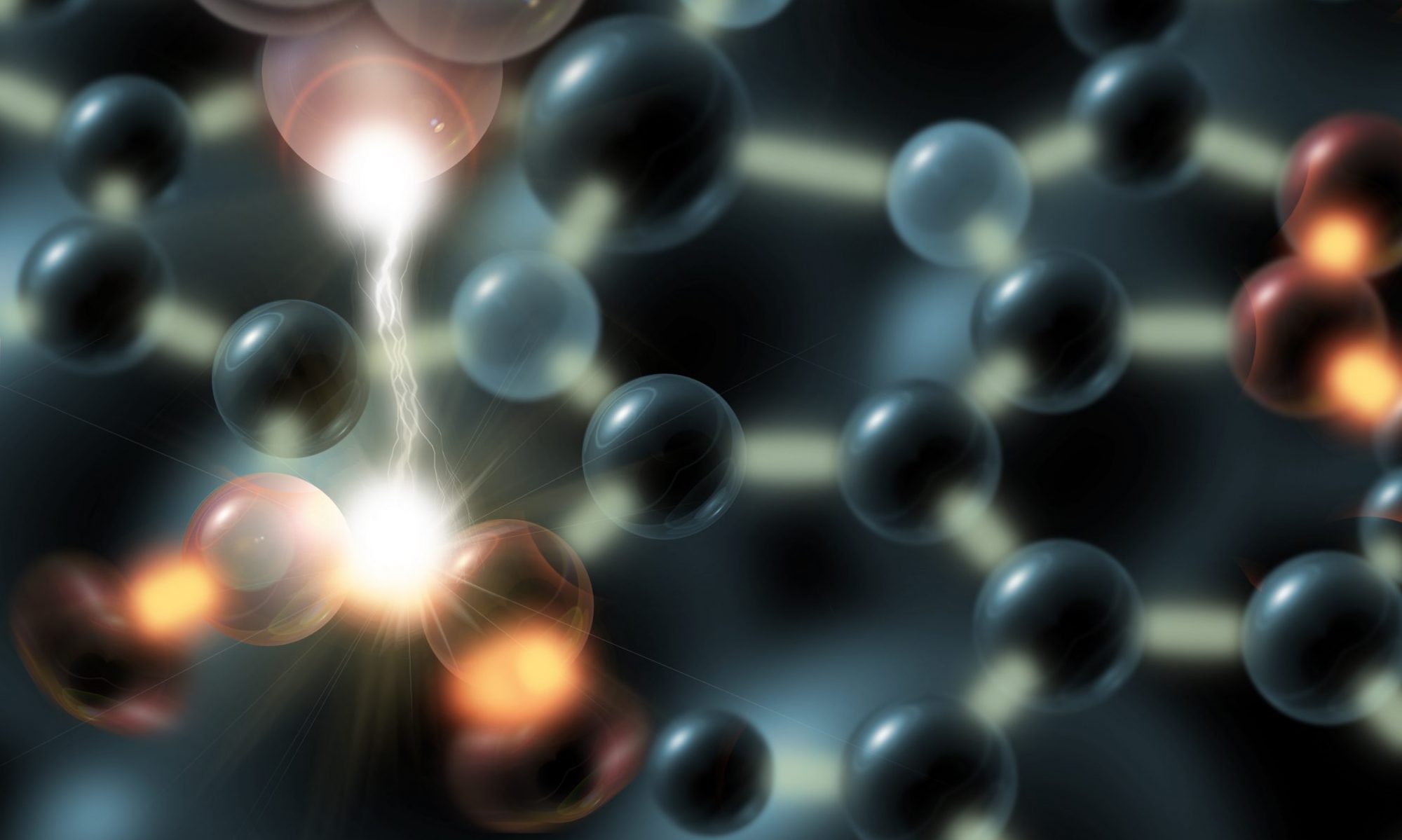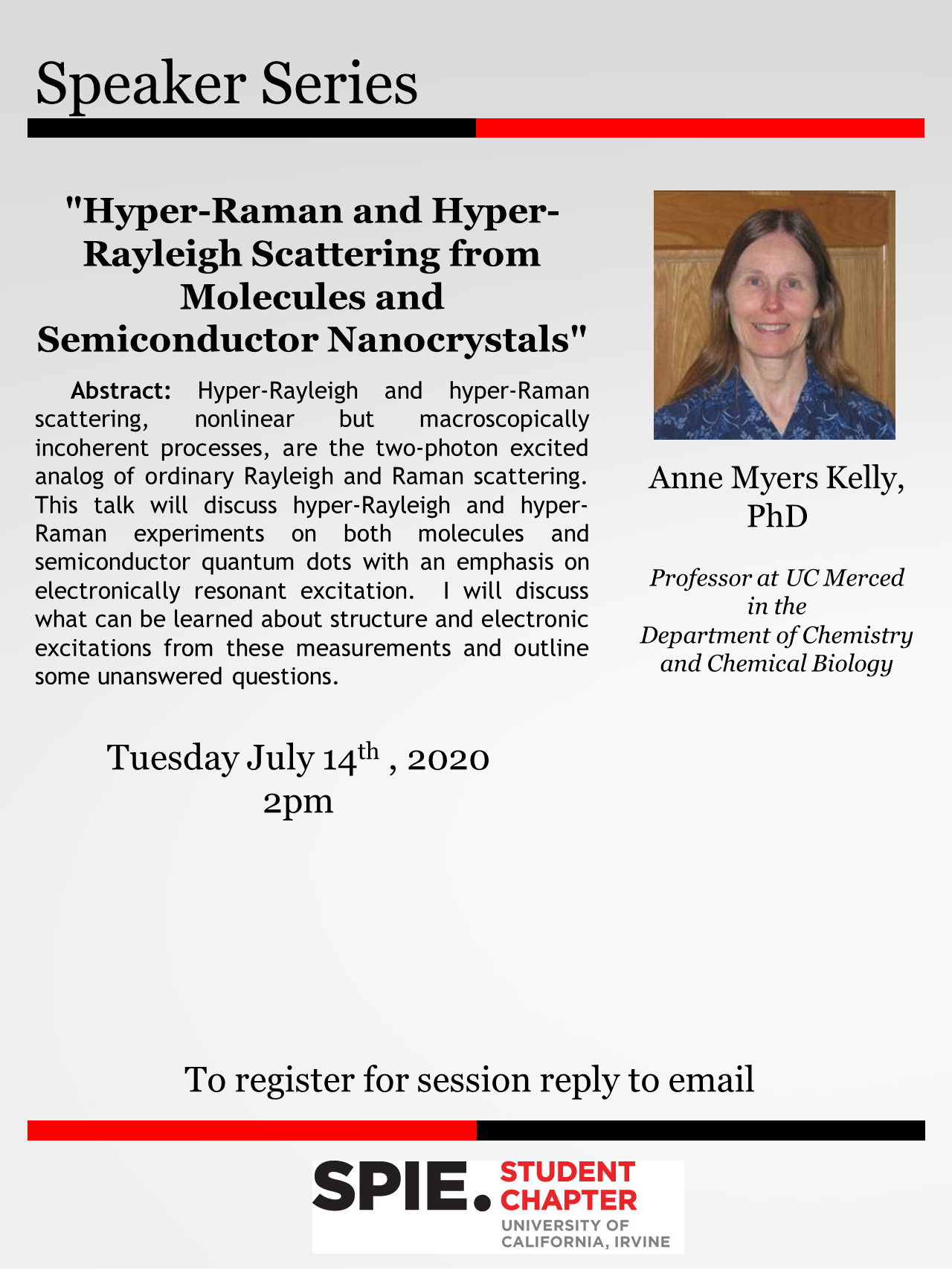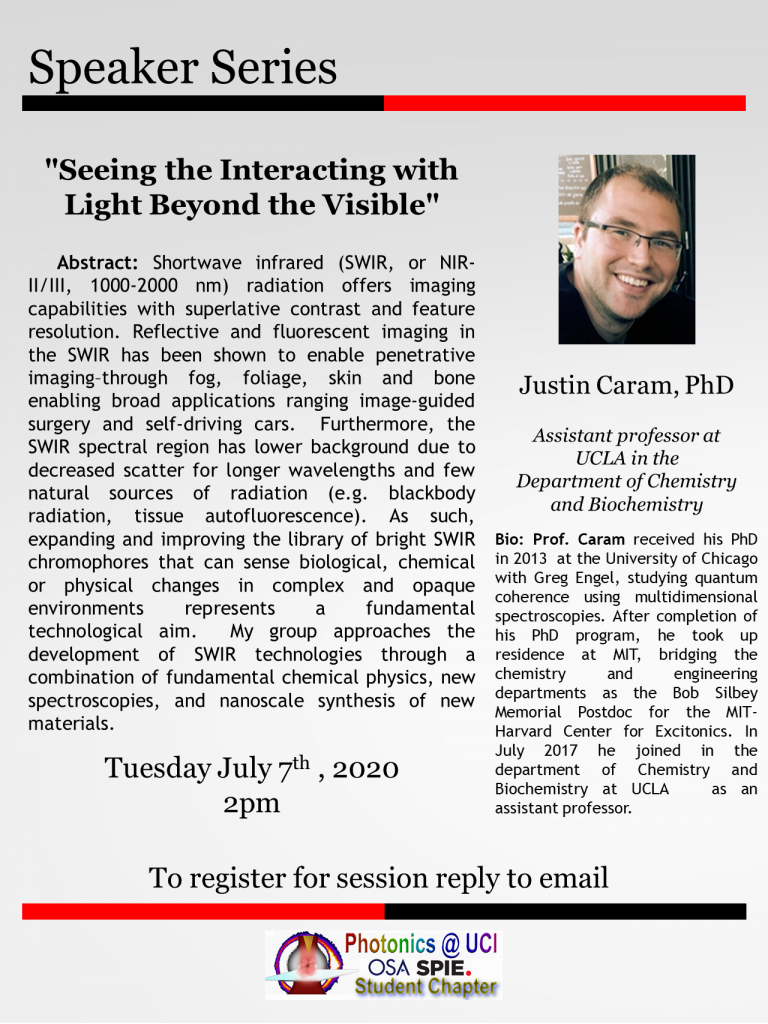
Virtual Seminar: Professor Stacy Copp from UCI 8/18/20


Optica and SPIE Student Chapter at the University of California, Irvine



[captainform id=”781558″]
On Friday, January 27th, we were pleased to host Professor Greg Gbur from the University of North Carolina, Charlotte (UNCC) Department of Physics and Optics for our yearly SPIE Traveling lecturer series.
This year’s talk had everyone intrigued from the beginning. With the clever title “How not to be seen: the science of invisibility,” Professor Gbur talked us through the crazy science fiction and the even crazier science of cloaking technology, invisibility, and metamaterials. We laughed, we cried, we asked “WTF.” Slide after slide, we were emerged in the science and fun speculation with what one can do with the increasingly plausible notion of invisibility. Protect from earthquakes? Make a hole in a wall? Turn a spoon into a coffee cup???

Also, Greg is a fantastic, interesting speaker, and we were so glad to host him. Professor Gbur also writes two web blogs on creepy stuff in science called the Science Chamber of Horrors, and a fun exploration of physics, optics, and pulp fuction: Skulls in the Stars.
Thanks for joining us on this blustery day, Greg! We hope you come visit us soon!

Dr. Xiao Wei Sun visited UC Irvine on December 22nd, 2016 and gave a very informative seminar on the current state of quantum dot and perovskite crystal display and lighting technologies. Dr. Sun started the seminar by first introducing us to his very new university, Southern University of Science and Technology, and to the rapidly growing city in which it is located, Shenzhen, China. Dr. Sun went on to describe in-detail the various applications, advantages, and obstacles faced in the development of quantum dot and perovskite-based LEDs.
Thursday Dec, 22, 2016
Natural Sciences 2, 1201 (first floor seminar room),
1 pm – 2:30 pm
Title: Semiconducting nanocrystals for energy-saving quality displays and lighting
Speaker: Xiao Wei Sun
Department of Electrical and Electronic Engineering, College of Engineering
Southern University of Science and Technology, Shenzhen, Guangdong, China
Abstract
We present highly efficient CdSe-based core-shell quantum dots and perovskite nanocrystals for energy-saving quality display and lighting applications. We applied these luminescent materials to make various devices including luminescent microspheres for on-chip InGaN LED packaging (photoluminescent applications), and making use of these materials as the emissive layer in solution processed quantum dot LED and perovskite LED (electroluminescent applications). In the photoluminescent applications, we were able to achieve high stable quantum dot composites called luminescent microspheres, which were tested for on-chip InGaN LED packaging. The output of the packaged LED was stable for more than 4000 hours under continuous operation, demonstrating a robust method of applying quantum dot for on-chip LED packaging. In the electroluminescent applications, we demonstrated a mixed-cation perovskite based perovskite-LED. With optimized composition, the LEDs exhibited encouraging performance with the highest reported luminance of 55000 cd m-2 and a current efficiency of 10.09 cd A-1. It is anticipated that luminescent semiconducting nanocrystals will shake or even revolute the display and lighting industry; a new era of nanocrystals is coming.Frontiers in Optics seminar.

Photonics@UCI: Frontiers in Photonics seminar series
Friday, March 11th, 2016 at 11:00 AM
Natural Sciences I, Room 4112
Title: Light vortices and unconventional polarization states
Thomas G Brown
Professor of Optics
The Institute of Optics
University of Rochester
Abstract: A vortex is characterized by a singular point surrounded by a rotating flow field. In optics, vortices are closely tied to basic concepts of angular momentum and usually features a dark spot in a beam about which the energy swirlsin a helical path as it propagates. In the last several decades, scientists and engineers have given a great deal of attention to vortices in the polarization of the optical field. These fit under the general class of unconventional polarization states, in which the polarization varies from point to point in a systematic and symmetric manner. This talk will describe how optical vortices can appear in something as simple as a piece of stressed glass, and how the resulting effects can be used in new kinds of optical measurements.
I will also take a portion of the talk to share perspectives about career opportunities in optics and emerging commercial opportunities in optics and photonics.
Patent Attorney, Knobbe Martens Intellectual Property Law.
1:00-2:00pm, Wednesday, November 4th, 2015
Location: Natural Science II, Room# 2201
Abstract: Dr. Itchkawitz will share his career path from research physicist to patent attorney and will illustrate the basics of patents that innovators in academia and industry should know.
About the speaker: Bruce S. Itchkawitz is a Registered Patent Attorney and Partner of Knobbe Martens Intellectual Property Law. He focuses on patent protection for a wide range of complex technologies, including optical systems for telecommunications and remote sensing, computer memory modules, laser-based medical devices, steerable wellbore drilling systems, nanotechnology, and microelectromechanical systems (MEMS).
Prior to joining the firm, Dr. Itchkawitz worked as a post-doctoral researcher in the Chemistry Department of the University of North Carolina at Chapel Hill, where he utilized scanning-tunneling microscopy in the study of semiconductor surfaces. He has also worked as a post-doctoral researcher at the National Synchrotron Light Source of Brookhaven National Laboratory for the Fritz-Haber Institute of Berlin, Germany, conducting studies of materials using synchrotron radiation. Dr. Itchkawitz has also worked at IBM Corp. in Endicott, New York as an engineer in an advanced test technology department.
Frontiers in Photonics – Bruce Itchkawitz
Photonics@UCI present the last seminar of the 2014-15 academic year:
Raman and His Effect: A historical and Biographical account
by Dr. V. Ramanathan, assistant professor at SASTRA University, India.
Thursday, June 25, 2015 at 2:00 PM
Natural Sciences 2 building, room 1201
Abstract: The Raman effect began with a simple observation: a “weak fluorescence” exhibited by organic solvents upon irradiating with the light from a mercury arc lamp. It has since then seen wide and exotic applications in fields like bio-medical imaging, forensic science, combustion spectroscopy etc. In this presentation, I would like to talk about the historical developments in the discovery of this optical phenomenon, alongside touching upon the biographical aspects of the scientist after whom the effect is named.
About the speaker: V. Ramanathan is currently a Fulbright Visiting Scholar in the Department of Chemistry, University of California, Irvine. He completed his PhD in 2008 from IIT Kanpur, India, working on laser induced fluorescence spectroscopy of organic molecules in supersonic jet. After a couple of postdocs in S. Korea, Germany and Switzerland, he is currently an assistant professor in the department of Chemistry at SASTRA University, Tamil Nadu, India. His current research interests are in bio-medical imaging using Raman micro-spectroscopy.
Enhance your presentation skills with a hands-on workshop lead by Jean-luc Doumont (Principiae), organized by Photonics@UCI and CaSTL. Download the flyer here.
 Strong oral presentation skills are a key to success for engineers, scientists, and other professionals, yet many speakers are at a loss to tackle the task. Systematic as they otherwise can be in their work, they go at it intuitively, sometimes haphazardly, with much good will but seldom good results. Based on Dr Doumont’s book about “effective communication for rational minds,” this lecture proposes a systematic way to prepare and deliver presentations. Among others, it covers structure, slides, and delivery, as well as stage fright.
Strong oral presentation skills are a key to success for engineers, scientists, and other professionals, yet many speakers are at a loss to tackle the task. Systematic as they otherwise can be in their work, they go at it intuitively, sometimes haphazardly, with much good will but seldom good results. Based on Dr Doumont’s book about “effective communication for rational minds,” this lecture proposes a systematic way to prepare and deliver presentations. Among others, it covers structure, slides, and delivery, as well as stage fright.
Tuesday April 7th 2015, 9am – 1pm
Natural Sciences 2, room 2201
Lunch will be provided.
RSVP by Friday March 13th, 2015
Write to Erika at emetz@uci.edu